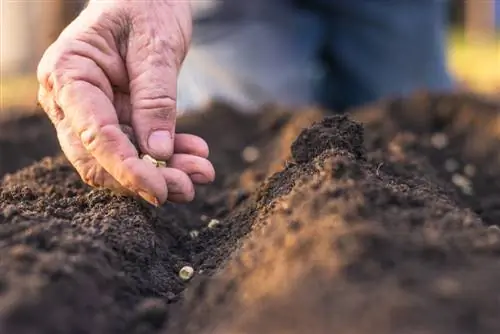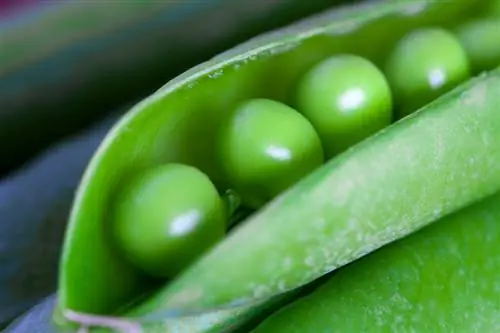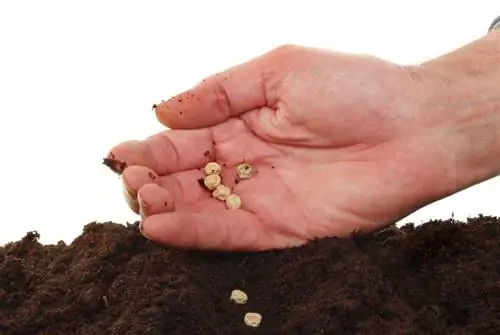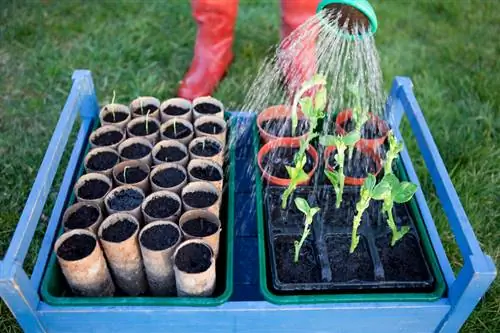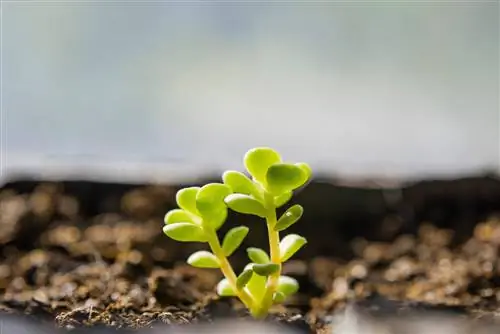- Author admin [email protected].
- Public 2023-12-16 16:46.
- Last modified 2025-01-23 11:22.
Freshly harvested peas from your own garden taste much tastier than the colorless vegetables from the can. Now, in March, you can sow the early and mid-early varieties, because the butterflies germinate at low temperatures.
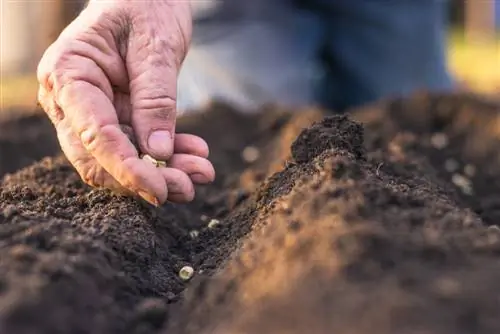
When and how should you sow early peas?
Early peas can be sown in March once the soil has reached 5°C. Sowing depth is 4-6 cm, with planting distance depending on plant height. The germination time is 1-2 weeks and the harvest is ready after about 2.5 months.
The sowing
As soon as the ground has warmed up a little and has reached a temperature of 5 degrees, you can sow the early varieties. It is important that the soil is well dried, as the pea seeds rot quickly.
- Sowing depth: 4 to 6 centimeters
- Planting distance: Depending on the plant height: For 40 centimeter high varieties 40 centimeters, for 80 centimeter high varieties 80 centimeters.
- Germination time: 1-2 weeks
- Preferring under glass: Possible from the end of February
- Planting out and sowing in beds: March to May
- Harvest maturity: After about 2.5 months
Sown in double rows or a wide groove. Place cultural protection nets over the peas until germination, as birds love to eat the nutritious seeds.
Since peas are climbing plants, they form holding vines. However, not all early varieties necessarily require a trellis (€56.00 on Amazon). How high the plants climb and whether they need bamboo sticks or a trellis is noted on the seed bag.
Watering and fertilizing
Peas are quite frugal and do not require a lot of water. Therefore, do not water too much, especially before the flowers form, otherwise the butterflies will produce a lot of foliage and produce fewer fruits. From the time of flowering, you should ensure even soil moisture, but never overwater.
Additional fertilization is not necessary because the pea supplies itself with the necessary nutrients through nitrogen-collecting nodule bacteria (legumes).
Care until harvest maturity
To thrive, peas need a loose soil structure. Therefore, hoe the bed regularly and use this opportunity to remove annoying weeds.
Early Harvest
Early varieties ripen in May. You can recognize mature pods by the tactile beads inside the pod. If the peas are already clearly visible, you should harvest them very quickly. When the legumes have become too large they no longer taste aromatically sweet, but instead become unpleasantly mealy.
Except for sugar peas, the peel is not eaten. However, this can be removed from the seeds quickly and easily. You can then eat the harvest fresh or preserve it by drying, boiling or freezing.
Tip
After harvesting, leave the roots of the peas in the ground. They provide many nutrients for subsequent cultivation, for example with salads.

